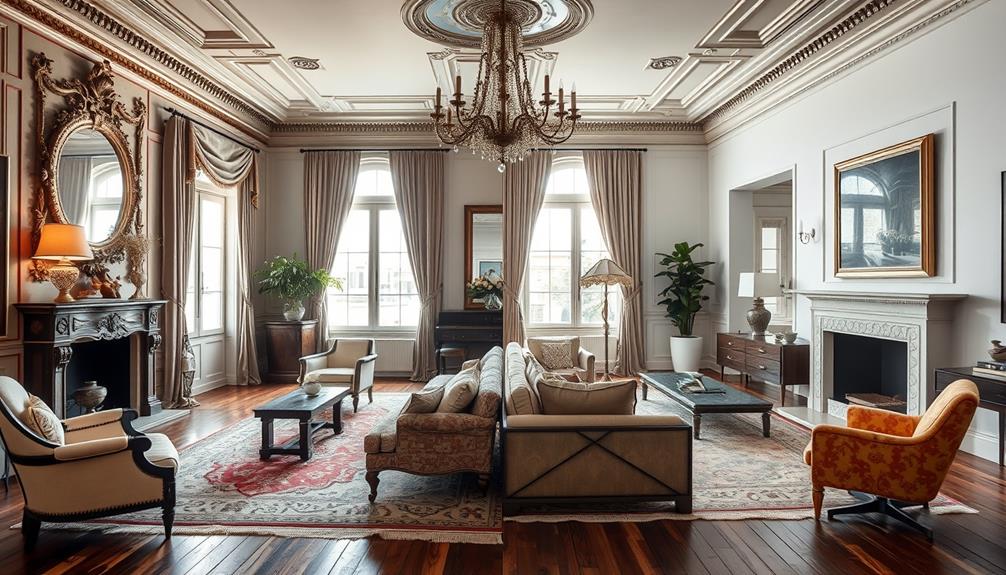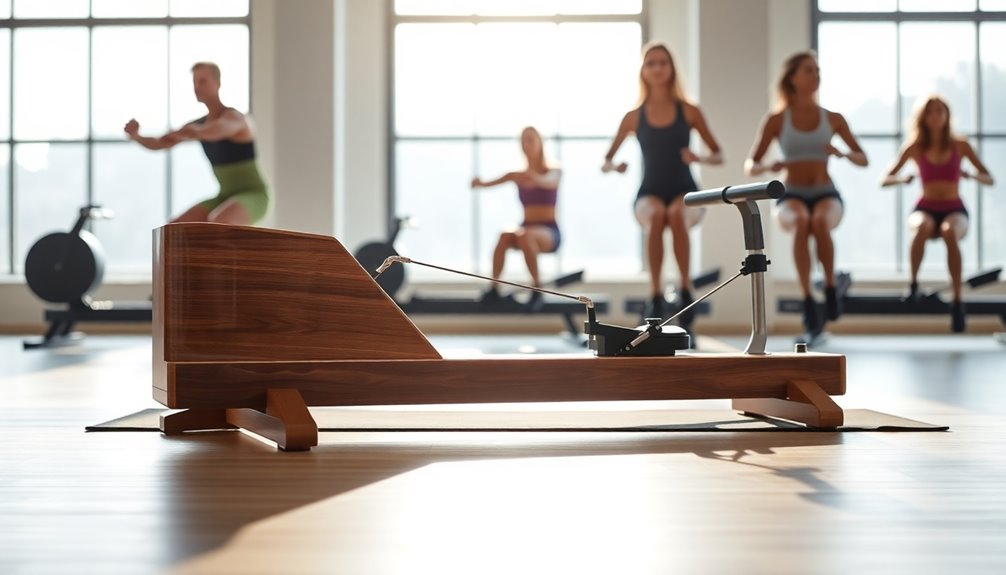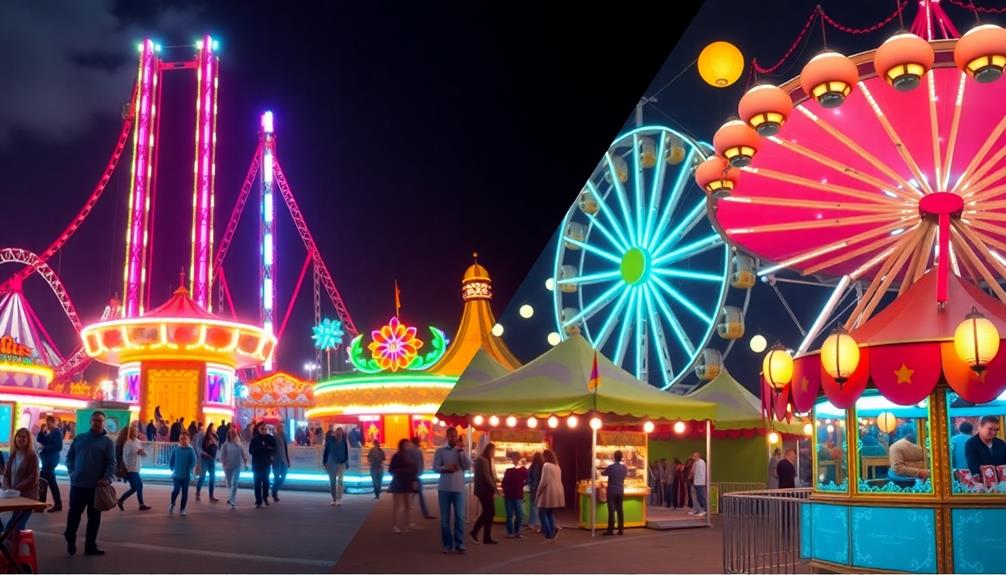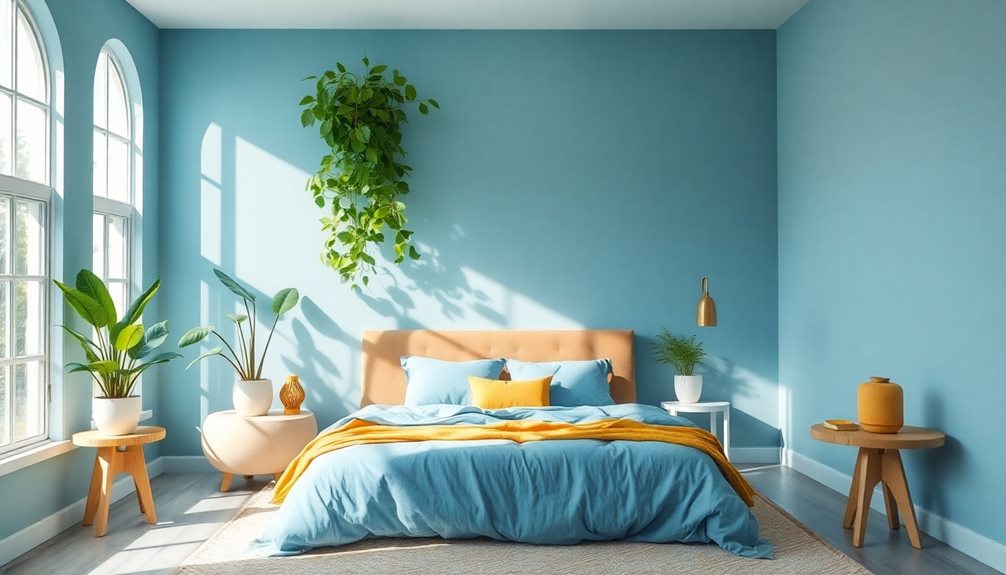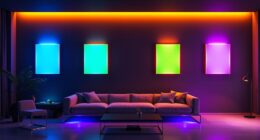In the classic vs. modern interior design debate, you have two distinct styles competing for your attention. Classic design features luxurious materials and vibrant colors, which create a sense of sophistication. Think deep reds and plush fabrics like velvet. On the other hand, modern design embraces simplicity and practicality, with a focus on clean lines and neutral tones that evoke tranquility. It’s all about versatile furniture and efficient layouts that help you declutter your space. Your decision will ultimately depend on whether you prefer luxurious warmth or minimalist calmness. Stay tuned to discover how these styles can revolutionize your home.
Key Takeaways
- Classic design is characterized by rich colors and luxurious materials, while modern design emphasizes simplicity and functionality with a neutral color palette.
- Classic interiors feature elaborate lighting and ornate details, whereas modern spaces prioritize clean lines and minimal decorative elements.
- Functionality is central to modern design, promoting versatile furniture and efficient layouts, contrasting with classic design's focus on opulence and grandeur.
- The emotional impact of classic design evokes feelings of sophistication, while modern design fosters tranquility and an open ambiance through its minimalist approach.
- Technology integration is seamlessly incorporated in modern interiors, enhancing convenience, unlike classic design, which often emphasizes traditional craftsmanship and aesthetics.
Characteristics of Classic Design
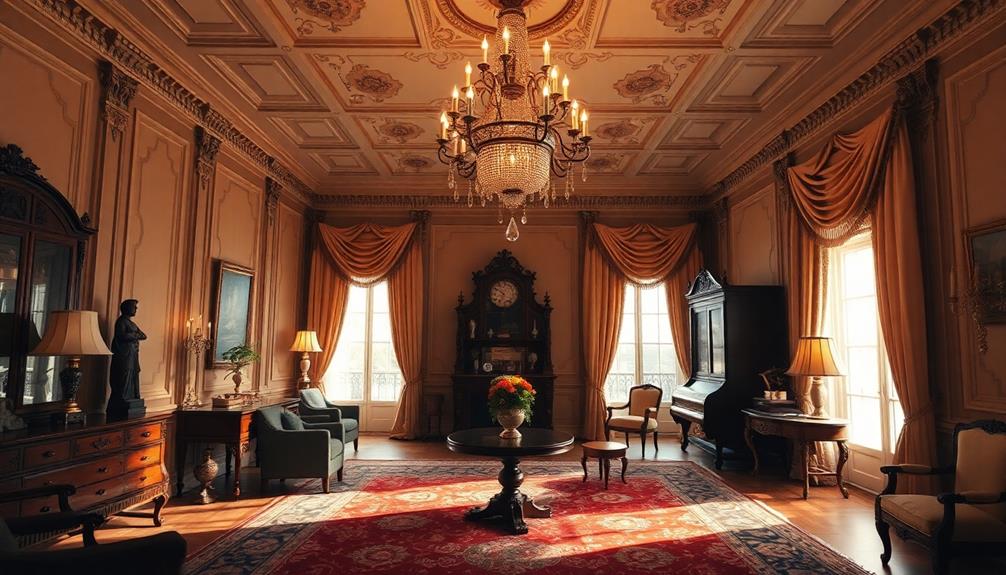
When you immerse yourself in classic interior design, you'll notice its deep roots in 18th and 19th-century European aesthetics, where elegance and balance reign supreme.
This design style often embraces rich colors like deep reds, forest greens, and luxurious yellows, creating a warm, inviting atmosphere.
You'll find prestigious materials such as oak, mahogany, and marble that enhance the opulence of your space.
Elaborate lighting fixtures, including breathtaking chandeliers and ornate sconces, add a touch of grandeur.
Luxurious fabrics like cotton, leather, and velvet provide comfort while exuding sophistication.
In classic design, every detail counts, and the harmonious blend of these elements creates a timeless elegance that transforms your home into a refined sanctuary. From the intricate moldings to the choice of rich textures, each aspect contributes to an environment that feels both inviting and luxurious. Victorian turrets architecture, with its elaborate towers and ornate finishes, serves as a perfect example of how structural details can evoke a sense of grandeur and history. By incorporating such iconic touches into your space, you can cultivate a timeless aesthetic that transcends passing trends. Whether it’s through the use of bold crown moldings or the intricate patterns of vintage wallpaper, **Victorian architectural design inspiration** offers a wealth of ideas for those seeking to infuse their space with history and character. The balance of architectural formality with thoughtful decorative elements strikes a unique contrast that makes your home feel both lived-in and stately. By carefully selecting pieces that echo the grandeur of this era, you can create a living space that honors tradition while remaining effortlessly sophisticated.
Key Features of Modern Design

Embracing simplicity and functionality, modern interior design presents a fresh perspective on living spaces.
You'll notice that this style emphasizes clean lines and a minimalist aesthetic, allowing for a serene environment. The use of neutral tones creates a balanced backdrop, enhancing the overall tranquility of your home.
Practicality is key, ensuring that each space meets your needs while remaining visually appealing.
- Versatile furniture that adapts to various needs
- Blended materials like glass, metal, and wood for a contemporary look
- Thoughtful incorporation of technology for enhanced convenience
- Design elements that prioritize usability without sacrificing aesthetics
Minimalist Design Principles
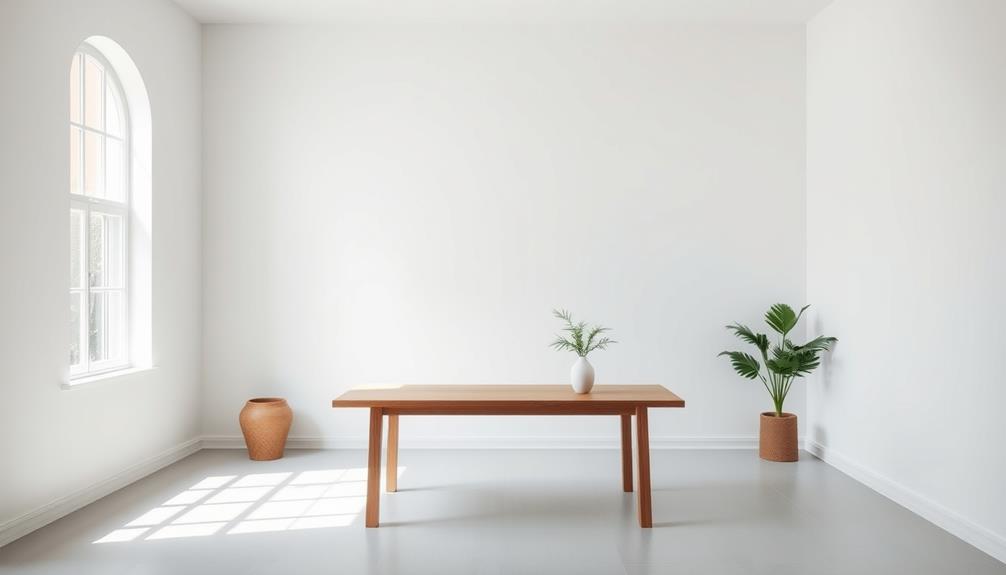
Minimalist design principles strip away the unnecessary, focusing on simplicity and functionality to create open and tranquil spaces.
You'll appreciate how neutral colors foster an uncluttered ambiance, enhancing relaxation.
When selecting furniture, remember the principle of "form follows function," ensuring every piece serves a purpose.
Materials like dark woods, chrome, and acrylic add sophistication while maintaining a clean aesthetic.
You'll find that minimalist designs prioritize harmonious environments, balancing elegance with practicality.
By keeping only essential items, you cultivate a serene atmosphere that encourages mindfulness and clarity.
Embracing these principles allows you to transform your space into a sanctuary, inviting peace and simplicity into your daily life.
Importance of Functionality
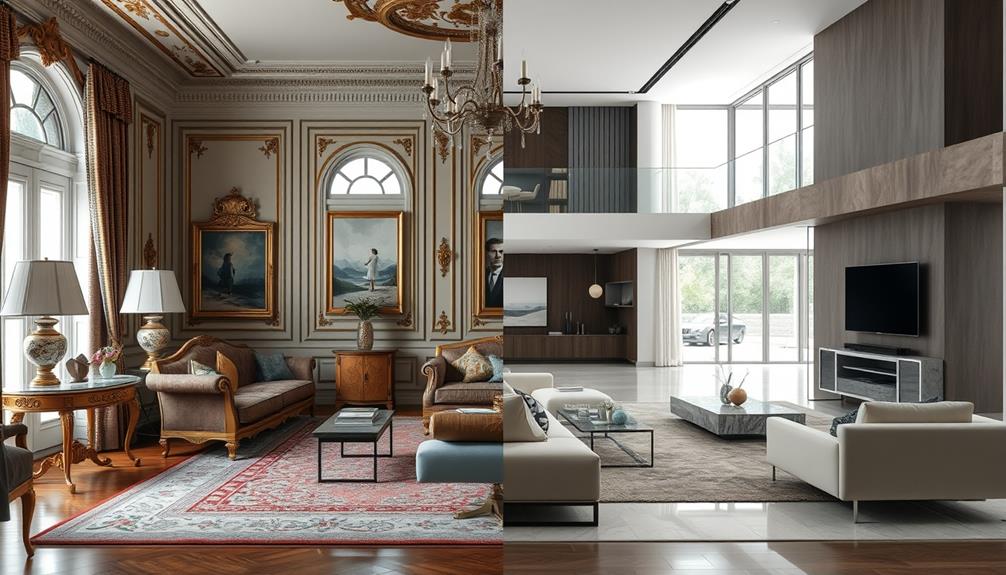
Functionality is at the heart of modern interior design, ensuring that every element serves a practical purpose in your space. This focus on usability transforms your home into a haven that meets your daily needs without sacrificing style.
Modern design emphasizes versatile furniture and efficient layouts, allowing you to maximize your space effectively. Here are some key aspects of functionality in modern interior design:
- Versatile furniture that adapts to various needs, like multi-functional sofas.
- Space-efficient solutions that declutter and enhance your living area.
- Seamless integration of technology for smart home convenience.
- Prioritization of practical design that simplifies everyday life.
Color Palettes Compared
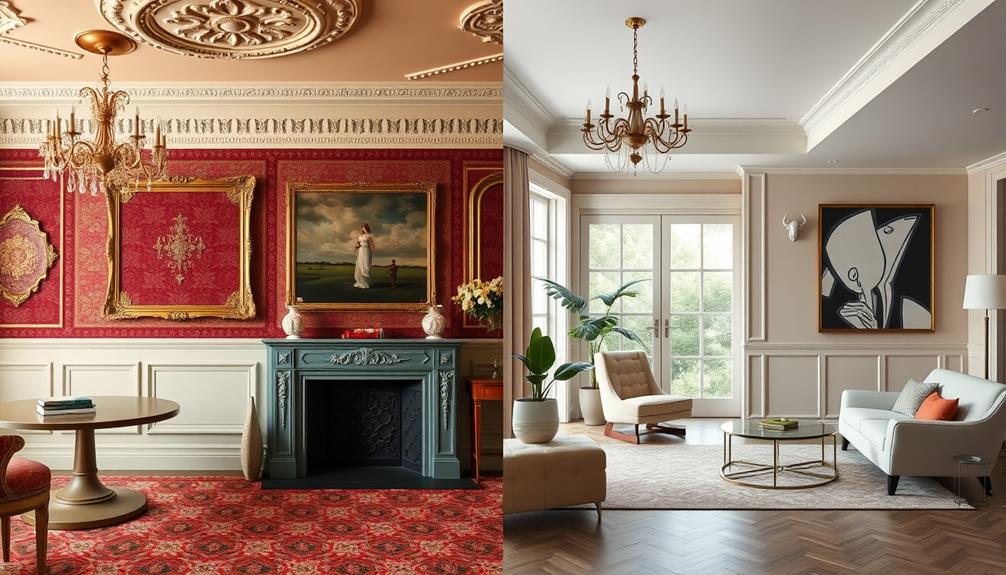
Comparing color palettes reveals the stark contrasts between classic and modern interior design styles.
In classic design, you'll find rich, warm colors like deep reds, forest greens, and luxurious yellows that create an opulent, inviting atmosphere. These hues evoke feelings of nobility and sophistication, transforming spaces into elegant retreats. Additionally, the use of vintage and antique furnishings can enhance the richness of these color schemes, providing an authentic touch to the overall aesthetic, much like the essential elements for farmhouse bedroom design.
On the other hand, modern design embraces neutral colors—think whites, greys, and muted earth tones. This minimalist approach fosters a serene, balanced environment, emphasizing simplicity and functionality.
The choice of colors profoundly impacts the overall mood of your space. While classic palettes invite warmth and richness, modern palettes promote tranquility and openness, reflecting the core values of each design philosophy.
Choose wisely based on the ambiance you want to create!
Frequently Asked Questions
How Do Classic and Modern Designs Impact Property Value?
Classic designs often boost property value through their timeless elegance, while modern designs attract buyers with functionality and minimalism. Your choice can greatly influence market appeal, so consider your target audience when deciding.
Can I Blend Classic and Modern Styles in One Space?
Absolutely, you can blend classic and modern styles in one space. Mix elegant furniture with minimalist accents, incorporate rich colors alongside neutral tones, and use diverse materials to create a harmonious and unique atmosphere.
Which Design Style Is Better for Small Apartments?
Did you know that 70% of small apartment dwellers prefer modern design? For your space, embrace modern's simplicity and functionality. It maximizes space and creates an airy feel, making your apartment feel larger and more inviting.
What Are the Maintenance Requirements for Classic Versus Modern Interiors?
When considering maintenance, classic interiors require more upkeep due to intricate details and luxurious materials. Modern interiors, with their simpler designs and durable materials, typically need less maintenance, making them easier to manage over time.
How Do Cultural Influences Shape Classic and Modern Design Trends?
Cultural influences shape design trends by reflecting societal values and aesthetics. You'll notice classic styles often embrace historical elegance, while modern designs prioritize contemporary needs, merging global inspirations to create unique, functional spaces that resonate with today's lifestyle.
Conclusion
So, whether you're dreaming of lavish chandeliers or sleek, open spaces, remember: you can't have it all, right? Classic design wraps you in warmth and history, while modern minimalism whispers simplicity and calm. Yet, somehow, both styles can coexist in your life—if you allow it. Ultimately, your choice reflects your taste, but don't be surprised if you end up blending the two, creating a delightful contradiction that's uniquely you. After all, who said you can't have the best of both worlds?
